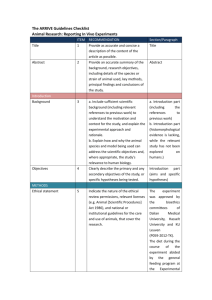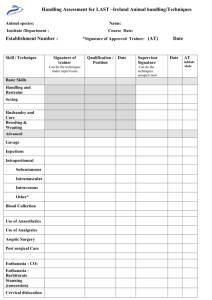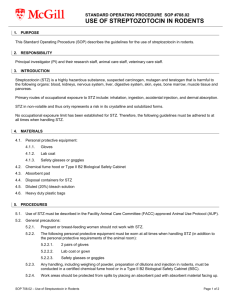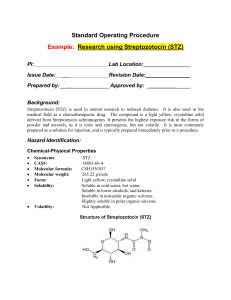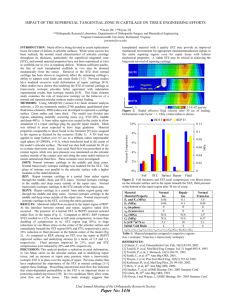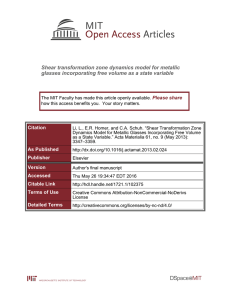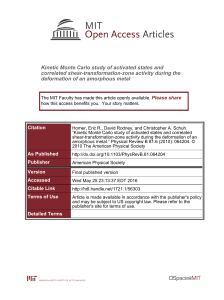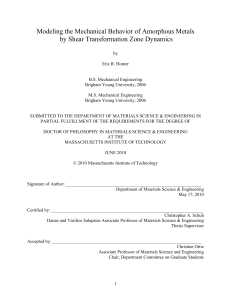Materials and Methods. (doc 48K)
advertisement
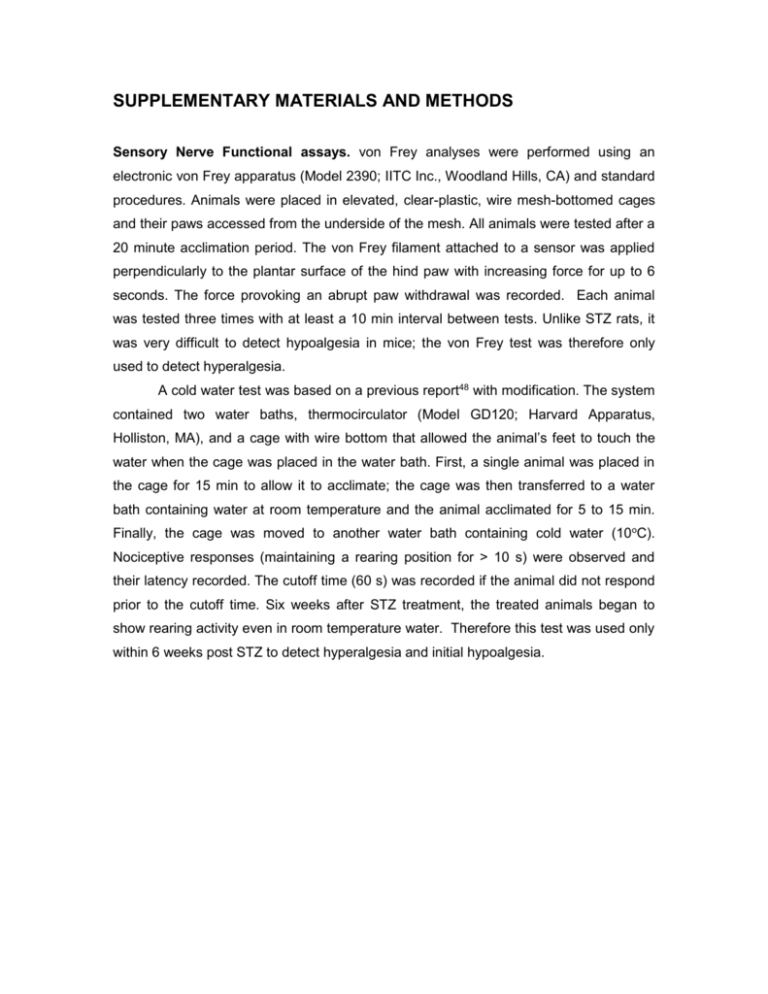
SUPPLEMENTARY MATERIALS AND METHODS Sensory Nerve Functional assays. von Frey analyses were performed using an electronic von Frey apparatus (Model 2390; IITC Inc., Woodland Hills, CA) and standard procedures. Animals were placed in elevated, clear-plastic, wire mesh-bottomed cages and their paws accessed from the underside of the mesh. All animals were tested after a 20 minute acclimation period. The von Frey filament attached to a sensor was applied perpendicularly to the plantar surface of the hind paw with increasing force for up to 6 seconds. The force provoking an abrupt paw withdrawal was recorded. Each animal was tested three times with at least a 10 min interval between tests. Unlike STZ rats, it was very difficult to detect hypoalgesia in mice; the von Frey test was therefore only used to detect hyperalgesia. A cold water test was based on a previous report48 with modification. The system contained two water baths, thermocirculator (Model GD120; Harvard Apparatus, Holliston, MA), and a cage with wire bottom that allowed the animal’s feet to touch the water when the cage was placed in the water bath. First, a single animal was placed in the cage for 15 min to allow it to acclimate; the cage was then transferred to a water bath containing water at room temperature and the animal acclimated for 5 to 15 min. Finally, the cage was moved to another water bath containing cold water (10oC). Nociceptive responses (maintaining a rearing position for > 10 s) were observed and their latency recorded. The cutoff time (60 s) was recorded if the animal did not respond prior to the cutoff time. Six weeks after STZ treatment, the treated animals began to show rearing activity even in room temperature water. Therefore this test was used only within 6 weeks post STZ to detect hyperalgesia and initial hypoalgesia.



